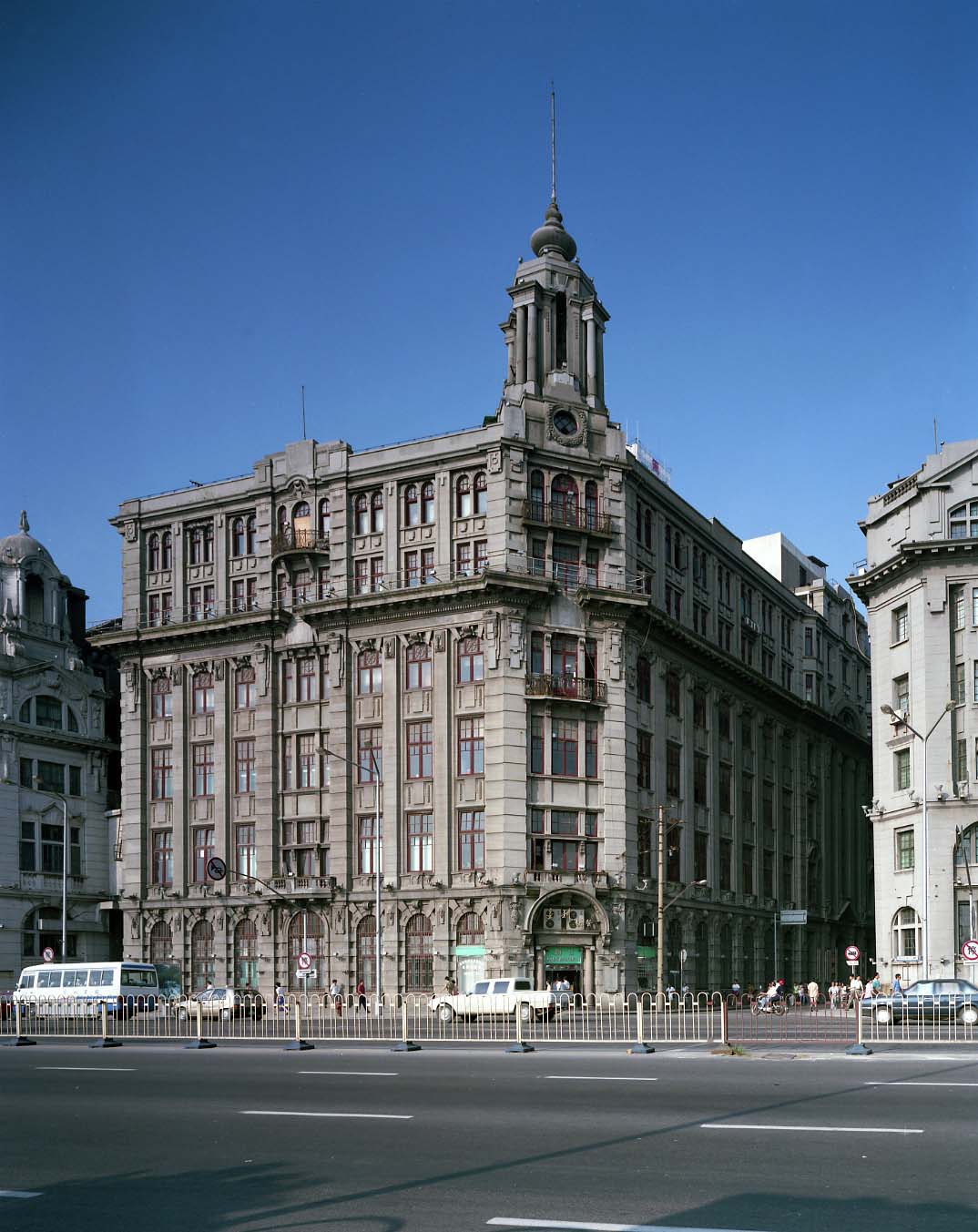Union Building, Shanghai on:
[Wikipedia]
[Google]
[Amazon]
The Union Building is a building on  The building is in
The building is in
Three on the Bund
High resolution architectural photographs of historical buildings in Shanghai
{{Shanghai Bund Buildings and structures completed in 1916 Buildings and structures in Shanghai Landmarks in Shanghai The Bund 1916 establishments in China 1916 in Shanghai
the Bund
The Bund is a waterfront area and a protected historical district in central Shanghai. The area centers on a section of Zhongshan Road (East Zhongshan Road No.1) within the former Shanghai International Settlement, which runs along the wester ...
in Shanghai
Shanghai, Shanghainese: , Standard Chinese pronunciation: is a direct-administered municipality and the most populous urban area in China. The city is located on the Chinese shoreline on the southern estuary of the Yangtze River, with the ...
, China
China, officially the People's Republic of China (PRC), is a country in East Asia. With population of China, a population exceeding 1.4 billion, it is the list of countries by population (United Nations), second-most populous country after ...
. It is located at No. 3, the Bund (formerly no. 4).
Completed in 1916, the building was used by a number of insurance companies. The six-storey building was the first work in Shanghai
Shanghai, Shanghainese: , Standard Chinese pronunciation: is a direct-administered municipality and the most populous urban area in China. The city is located on the Chinese shoreline on the southern estuary of the Yangtze River, with the ...
of P&T Architects and Surveyors (Palmer & Turner), and was the first building in Shanghai to use a steel structure. The building occupied 2241 square metres, with a floor area of 13760 square metres. Because it had a narrow frontage onto the Bund, the main door was located on the adjacent Guangdong Road.
 The building is in
The building is in Neo-Renaissance
Renaissance Revival architecture (sometimes referred to as "Neo-Renaissance") is a group of 19th-century Revivalism (architecture), architectural revival styles which were neither Greek Revival architecture, Greek Revival nor Gothic Revival ar ...
style with a symmetrical facade, but with some Baroque style
The Baroque ( , , ) is a Western style of architecture, music, dance, painting, sculpture, poetry, and other arts that flourished from the early 17th century until the 1750s. It followed Renaissance art and Mannerism and preceded the Rococo (i ...
details. The roof features a domed corner pavilion.
In 1937, the Japanese Imperial Army
The Imperial Japanese Army (IJA; , ''Dai-Nippon Teikoku Rikugun'', "Army of the Greater Japanese Empire") was the principal ground force of the Empire of Japan from 1871 to 1945. It played a central role in Japan’s rapid modernization during th ...
threatened Shanghai
Shanghai, Shanghainese: , Standard Chinese pronunciation: is a direct-administered municipality and the most populous urban area in China. The city is located on the Chinese shoreline on the southern estuary of the Yangtze River, with the ...
. Being unable to indemnify war damages, the insurance companies had their assets frozen. The Union Bank then purchased the building. In 1949 the Union Bank evacuated from Shanghai
Shanghai, Shanghainese: , Standard Chinese pronunciation: is a direct-administered municipality and the most populous urban area in China. The city is located on the Chinese shoreline on the southern estuary of the Yangtze River, with the ...
in the wake of the Communist takeover. From 1953 the building was used by the Shanghai Civil Architecture and Design Institute. In 1997 a private equity fund from Singapore
Singapore, officially the Republic of Singapore, is an island country and city-state in Southeast Asia. The country's territory comprises one main island, 63 satellite islands and islets, and one outlying islet. It is about one degree ...
purchased the building, and in 2004 converted it to a shopping centre, called "Three on the Bund". The restoration was led by American architect Michael Graves
Michael Graves (July 9, 1934 – March 12, 2015) was an American architect, designer, and educator, and principal of Michael Graves and Associates and Michael Graves Design Group. He was a member of The New York Five and the Memphis Group and ...
who meticulously restored the Beaux-Arts facade, reinforced the structure, and installed new building systems. He hailed his efforts as a model of adaptive reuse
Adaptive reuse is the reuse of an existing building for a purpose other than that for which it was originally built or designed. It is also known as recycling and conversion. The adaptive reuse of buildings can be a viable alternative to new con ...
and won the 2006 design in Asia award.
References
External links
Three on the Bund
High resolution architectural photographs of historical buildings in Shanghai
{{Shanghai Bund Buildings and structures completed in 1916 Buildings and structures in Shanghai Landmarks in Shanghai The Bund 1916 establishments in China 1916 in Shanghai